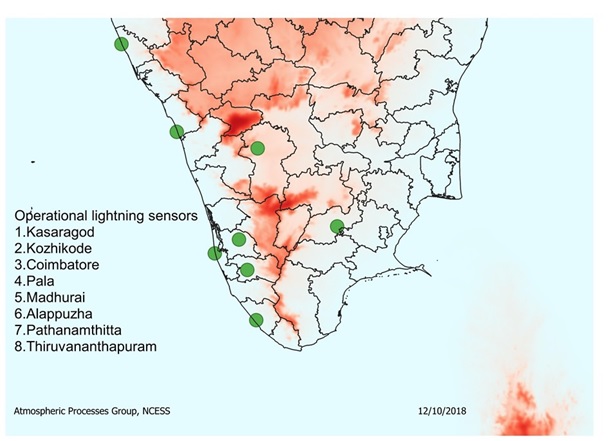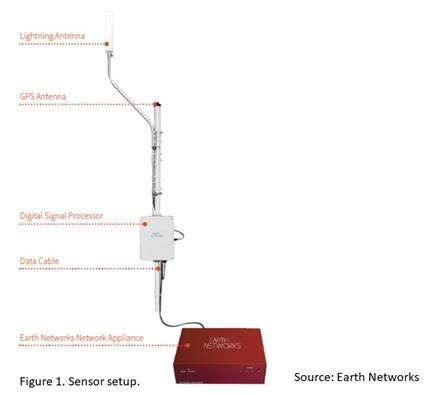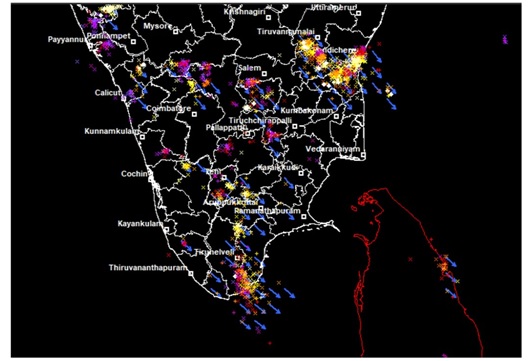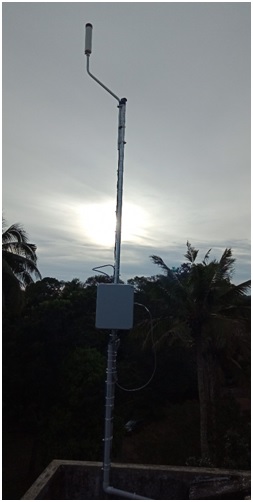
Lightning Detection Network
The National Centre for Earth Science Studies (NCESS), Ministry of Earth Science, Govt of India, Thiruvananthapuram installed the Lightning Detection Network (Make: Earth Networks, USA), across southwest India in collaboration with Indian Institute of Tropical Meteorology, Pune. The sensors detect the flash rate per second, position (latitude and longitude) and type of lighting (Intra cloud and cloud to ground; IC or CG) over the region. The detection is based on the time of arrival technique (TAO).
Sensor and accessory details
Lightning sensor : Earth Networks Lightning Sensor
Types of Lightning Detected : Cloud-to-Ground (CG) and In-Cloud (IC) strokes.
Sensor Radio Frequency Bandwidth : 1 Hz to 12 MHz.
Location Accuracy in southwest India : <100 meters (density dependent).
Detection Efficiency’s : > 95%; IC: > 85% (density dependent).
Sensor Baseline in south India : 50 km to 160 km.
Method : Time of arrival (of radio waves).
Sensor Timing Accuracy : <15 nanoseconds.
UPS unit : Hykon 1KVA unit with two 75 AH Exide batteries.
Internet : BSNL FTTH connection and accessories.
Sensor hosting institutes and collaborators
1. India Meteorological Department, Govt. of India.
2. Kerala Ports, Govt. of Kerala.
3. Central Plantation Crops Research Institute, ICAR, Kasaragod, Govt. of India.
4. Dept. of Physics, St. Thomas College, Palai, Kerala.
5. Dept. of Physics, Catholicate College Pathanamthitta, Kerala.
6. Dept. of EEE, Thiagarajar College of Engineering, Madurai, Tamil Nadu
7. Agro Climate Research Centre, Directorate of Crop Management, Tamil Nadu Agricultural University Coimbatore, Tamil Nadu
8. IITM, ESSO-MoES, Govt. of India, Pune
Internet provider: BSNL (FTTH), Thiruvananthapuram.
Sensor locations in south India. SRTM elevation is shown in background

Sensor setup

Lightning observed by lightning network on 3 October 2018, 03 UTC

Field photograph of the sensor installed





 RTI Act
RTI Act
